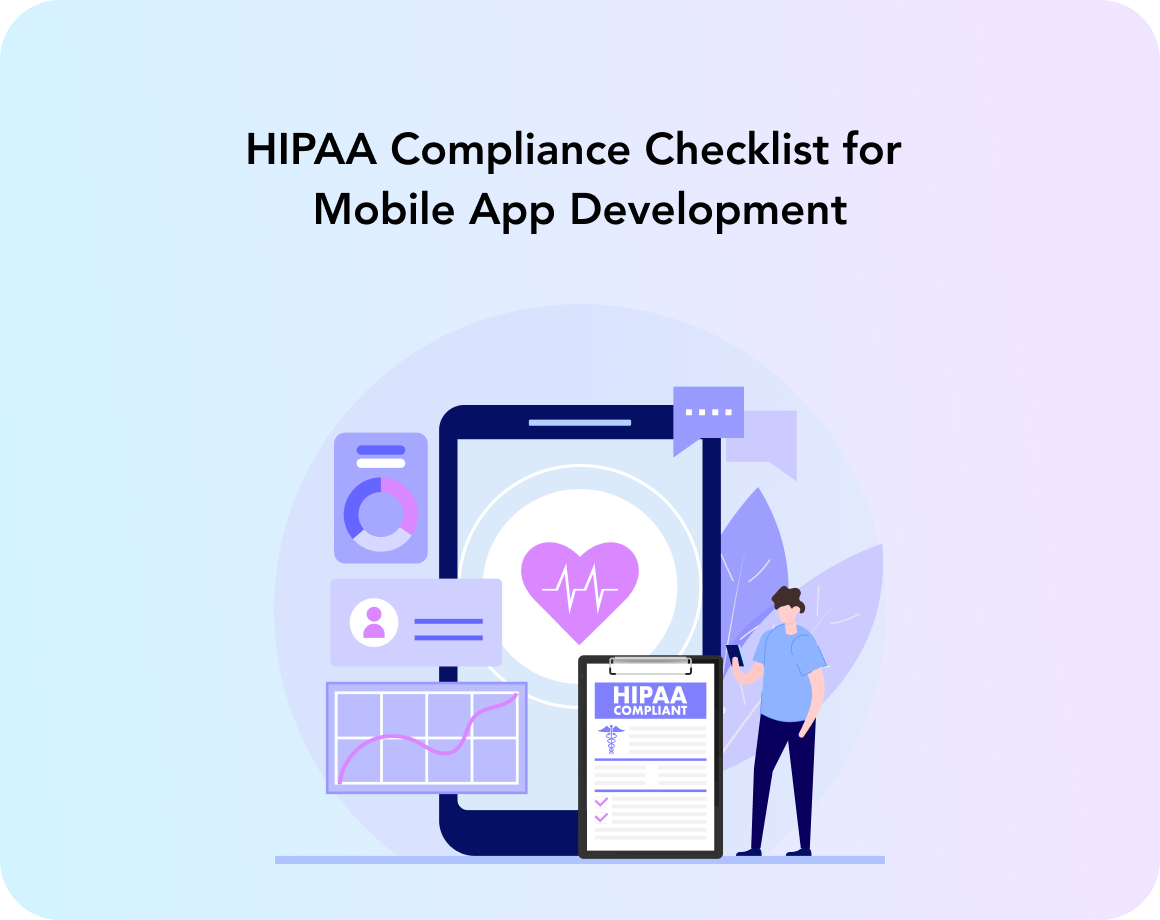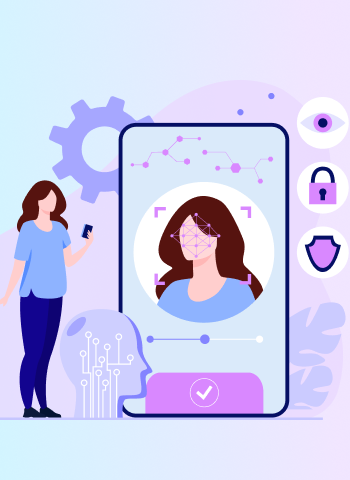Any industry has a set of software requirements and safety protocols to ensure data protection. Healthcare is among the niches that need a secure software system protected against data leaks and unauthorized access to highly sensitive patient information.
To make sure software stakeholders don’t miss an important aspect of data protection, there are some set guidelines that serve as a benchmark and define the requirements for secure software systems. For healthcare organizations, HIPAA (Health Insurance Portability and Accountability Act) is the main regulation describing how healthcare providers should protect their patients’ sensitive information.
In this blog post, we will discuss the main requirements for developing HIPAA-complaint software. This checklist will be useful for both developers looking to create a secure product and stakeholders who want to make sure their software matches the industry standards.
What Is HIPAA?
HIPAA stands for the Health Insurance Portability and Accountability Act, which is a federal law enacted in the United States in 1996. Its primary purpose is to protect the privacy and security of patients' sensitive health information and improve the efficiency of the healthcare system. HIPAA consists of two main components:
- Privacy Rule: The privacy rule establishes national standards to protect individuals' medical records and other personal health information. The privacy rule discusses how healthcare providers should use, disclose, and safeguard protected health information (PHI) while ensuring patients' rights to access and control their own health information.
Under the privacy rule, healthcare organizations must obtain patients' consent before using or disclosing their PHI for purposes other than treatment, payment, or healthcare operations. It also sets limitations on sharing PHI with third parties and demands proper security measures to protect against unauthorized access, breaches, and potential misuse of PHI. - Security rule: The security rule is an addition to the privacy rule as it describes the precise requirements for the technical and physical safeguards that healthcare organizations must implement to protect electronically protected health information (ePHI). The Security Rule applies to ePHI in electronic health records (EHRs), databases, emails, and other electronic systems.
The Security Rule requires organizations to conduct risk assessments, implement security measures to safeguard ePHI and develop contingency plans in case of data breaches or system failures. It sets standards for access controls, encryption, data backups, audit trails, and other security practices to ensure the confidentiality, integrity, and availability of ePHI.
The security rule is exactly what software developers have in mind when working with healthcare solutions. By focusing on security rules, software developers aim to safeguard patient privacy, prevent unauthorized access to sensitive data, and maintain the integrity and confidentiality of health information.
HIPAA Terminology to Know
Before we dive into the HIPAA-compliant software development checklist, let’s explore essential HIPAA terminology that any healthcare software developer or stakeholder should be familiar with. Understanding these terms will simplify your journey with assuring the HIPAA compliance of your product.
- Protected health information (PHI): any individually identifiable data. Birth dates, death dates, discharge states, admitted dates, treatment dates, any type of data that is going to be able to take you to the point where you might be able to figure out who's being referenced, and then, of course, telephone numbers and fax numbers.
- Covered entities: associations and people offering healthcare services/activities or accepting payments for them.
- Business associate: the nonmembers that work as vendors or subcontractors for a covered entity with PHI admittance.
Let’s now take a closer look at how to develop HIPAA-compliant software.
Requirements for Developing HIPAA-compliant Software
Based on our experience with developing healthcare solutions here at Perpetio, we came up with a list of requirements to keep in mind when working with similar products.
1. Encryption
Types of encryption required to save healthcare software can include:
- End-to-end encryption
- HTTPS protocol
- PGP (Pretty Good Privacy)
- SSL (Secure Sockets Layer)
- Transmission security (encryption in transit)
- Storage encryption
It’s a must for you to implement robust encryption techniques to protect sensitive data. This involves encrypting data both in transit and at rest to prevent unauthorized access. Encryption algorithms, such as AES (Advanced Encryption Standard), can be employed to safeguard client information.
To be more precise, these are three main encryption types you absolutely have to include:
- Encryption Algorithms: Use industry-standard encryption algorithms, such as Advanced Encryption Standard (AES), to ensure strong encryption. AES-256 is currently recommended as it provides a high level of security.
- Encryption at Rest: Encrypt data stored in databases, file systems, or other storage mediums. This protects data even if physical storage devices are compromised or stolen. Full disk encryption or file-level encryption can be implemented.
- Encryption in Transit: Encrypt data during transmission over networks to protect it from unauthorized interception or tampering. Transport Layer Security (TLS) or Secure Sockets Layer (SSL) protocols should be used for secure communication between systems.
2. Access monitoring, access controls, logging
As a healthcare software developer or stakeholder, you need to implement strict access controls to limit access to sensitive client data. Role-based access control (RBAC) can be used to grant appropriate access privileges to healthcare professionals based on their roles and responsibilities. This ensures that only authorized individuals can access specific client information.
Plus, remember to implement robust audit logs and monitoring systems to track and monitor access to client data. This enables the detection of any unauthorized access attempts or suspicious activities, helping to ensure data integrity and identify potential security breaches.
Let’s look at the ways to authenticate users and decide who is granted access to the system and who is not.
Authentication
Fast Identity Online (FIDO) provides a set of authentication standards to choose between, including:
- A strong password that meets the password guidelines, such as:
- Length: Passwords should be a minimum of 12 characters long. Longer passwords provide more complexity and make them harder to crack.
- Complexity: Include a combination of uppercase and lowercase letters, numbers, and special characters (e.g., !@#$%^&*). This adds complexity and makes the password harder to guess or crack.
- Avoid common patterns: Avoid using common patterns or easily guessable sequences such as "123456" or "password." Similarly, avoid using sequences of characters from the keyboard (e.g., "qwerty" or "asdfgh").
- Avoid personal information: Do not include personal information such as names, birthdates, or addresses in passwords. This information is often readily available or easily guessed.
- Unique passwords: Use a unique password for each account or system. Reusing passwords across multiple accounts increases the risk of a security breach.
- Avoid dictionary words: Avoid using dictionary words, as they can be easily guessed by automated password-cracking tools. Instead, consider using passphrases or combining random words to increase the complexity.
- Regularly update: Regularly change passwords, especially for sensitive accounts or systems. Changing passwords periodically reduces the risk of unauthorized access.
- Password managers: Consider using a reputable password manager tool. Password managers generate and store complex passwords securely, eliminating the need to remember multiple passwords.
- Education and awareness: Educate users about the importance of strong passwords and the risks associated with weak passwords. Provide guidance on creating and managing passwords securely.
- 2FA (two-factor authentication)
- SMS verification: After entering a username and password, users receive a one-time passcode (OTP) via SMS, which they need to enter to complete the authentication process.
- Authenticator app: Users install an authenticator app (e.g., Google Authenticator or Authy) on their mobile devices. The app generates time-based OTPs that users need to provide along with their credentials.
- MFA (multi-factor authentication), for example, biometric verification + password when users provide a combination of a biometric identifier (e.g., fingerprint or face scan) along with a password to authenticate their identity.
- Smart Cards + PIN: Users insert a smart card into a reader and enter a unique PIN to authenticate themselves.
Password-less methods, such as biometric authentication, facial/voice authentication, smart cards or hardware security keys, and one-time passwords (OTPs).
Unique user identification
Unique user identification ensures that each user is assigned a distinct identifier, such as a username or an ID, and is allowed only one login or account within a particular system or platform. This approach enhances security, accuracy, and accountability by ensuring that each individual is uniquely identified and associated with their own set of data and privileges.
Unique user identification is essential in healthcare systems to ensure proper patient management. Each patient is assigned a unique medical record number or identifier, enabling healthcare professionals to accurately identify and track their medical history, treatments, and prescriptions.
Unique user identification methods include:
- One login per user
- One ID for one entity
- One entity for one ID (SSN is NOT an ID)
3. Data Minimization, data disposal, and data sharing agreements
Remember to only collect and store the minimum necessary client data required for healthcare purposes. Avoid collecting excessive personal information that is not directly relevant to the provision of healthcare services. By minimizing the amount of stored data, the risk of unintended exposure or misuse is reduced.
Additionally, you should establish clear data-sharing agreements and protocols with third-party entities, such as research institutions or healthcare partners. Ensure that proper data anonymization and privacy measures are in place when sharing client data outside the organization.
4. Data safety and safeguards (facility & device access controls for ePHI)
When it comes to data safety, you will need to employ secure data storage practices, such as utilizing encrypted databases or secure cloud storage solutions. Regularly update and patch software to address any vulnerabilities that may compromise data security.
Cloud system
We recommend introducing a hybrid cloud model where highly sensitive information is accessible over a private cloud, while other services use the public cloud. Systems containing sensitive patient data such as imaging, and electronic health records are usually hosted on private clouds.
Ensure data backup and storage
Regular data backups protect critical patient information from accidental loss or cyber-attacks, while encrypted storage solutions add an extra layer of security against unauthorized access to ePHI. By adopting these practices, healthcare organizations safeguard patient privacy, maintain trust, and ensure uninterrupted healthcare services.
System integrity, separating layers, and adding controls to each layer
One more crucial practice in healthcare software development is data segmentation. It’s best if you segment data and encrypt it separately based on sensitivity. This helps ensure that even if one segment is compromised, the entire dataset remains secure. For example, patient identifiers can be encrypted separately from medical records.
Automatic log-off, refresh token, log out/tap off
Implementing these features in healthcare systems is highly recommended to maintain data security and protect patient privacy. They help mitigate the risk of unauthorized access, reduce the likelihood of data breaches resulting from unattended sessions, and provide users with control over their active sessions.
5. Push notification and email formatting should not contain PHI
When it comes to push notifications, emails, and other communication methods your software can send, remember to include PHI wisely so you don’t compromise any sensitive data. Here are a few rules:
- Avoid PHI in subject lines: Refrain from including any PHI in the subject line of emails or push notifications.
- Use generic greetings: When sending push notifications or emails, use generic greetings that do not disclose any personal or health-related information.
- Be mindful of content: Ensure that the content of push notifications and emails does not contain any PHI. Avoid discussing specific medical conditions, test results, or any other sensitive health information that could potentially identify an individual.
- Obtain consent: Before sending any push notifications or emails, obtain the consent of the individuals involved. Clearly explain the purpose of the communication and obtain their explicit permission to contact them through these channels.
- Use secure messaging platforms: If push notifications or emails contain non-PHI information, ensure that you use secure messaging platforms or email services that provide encryption and other security measures. This helps safeguard the content of the messages and protects against unauthorized access.
- Regularly review and update policies
6. Anonymization Techniques (De-identified images, anonymized data objects)
You should use anonymization techniques to de-identify client data whenever possible. This involves removing or obfuscating personally identifiable information (PII) from the dataset, such as names, social security numbers, and addresses. Instead, assign unique identifiers or pseudonyms to maintain data integrity while protecting client privacy.
7. Staff training and awareness
One more task ahead of you and your trusted software development team is to provide comprehensive training to healthcare staff regarding data privacy and security practices. Foster a culture of data protection and raise awareness about the importance of maintaining client anonymity and confidentiality.
8. System protection
There is a list of factors your healthcare software system has to be protected from, such as:
- Phishing and social engineering for stealing and obtaining PHI: Phishing attacks involve fraudulent emails, messages, or phone calls that trick individuals into revealing sensitive information or performing actions that compromise security. Social engineering techniques are often used to manipulate healthcare employees into divulging credentials or granting unauthorized access.
- Ransomware infecting systems and files: Ransomware attacks involve malware that encrypts data and demands a ransom payment in exchange for its release. Healthcare organizations are often targeted because of the criticality of patient data and the potential impact on patient care if systems are locked.
- DDoS attacks overwhelming a network and preventing it from operating: DDoS attacks overwhelm healthcare systems with a flood of network traffic, rendering them inaccessible to users. These attacks disrupt operations, impacting patient care and causing potential financial loss.
- Human error and credential stuffing include weak passwords, wrong recipients, and password sharing
- Insider threats: Insider threats involve individuals within the organization who misuse their access privileges or intentionally compromise data security. This can be due to malicious intent or unintentional actions resulting from poor security practices or inadequate training.
9. Emergency access to data
In cases of urgent medical situations, such as emergencies, the system allows authorized health providers to access the necessary patient information through what is known as Emergency Mode. This feature ensures that healthcare professionals can swiftly retrieve vital data, enabling them to make well-informed decisions and provide prompt and effective care. While granting this emergency access, stringent security measures are still upheld to protect the confidentiality and integrity of the patient's sensitive information, ensuring compliance with HIPAA regulations at all times.
10. Use HIPAA software for each development level
Finally, it’s critical that you not only develop a completed product that aligns with HIPAA requirements but also uses HIPAA-approved software. It will ensure that the product and all of its elements are safe and that no data leaks are possible during or after the software development process.
Your technical setup should include:
- HIPAA-compliant database software, for example, Amazon Web Services (AWS), Microsoft SQL Server, Oracle Database, MySQL
- HIPAA-compliant project management software, for example, Trello, Asana, Wrike, Basecamp, Jira
- Other services
Bottom Line
From robust encryption techniques to access controls and logging, software developers must adhere to a range of best practices to safeguard patient privacy. We have prepared this comprehensive checklist for our clients and their development teams, drawing from our experience in software development. Our aim is to assist you in understanding the vital requirements and ensure that your product fully complies with HIPAA guidelines. By leveraging our expertise, you can confidently create secure and reliable solutions that safeguard sensitive patient information while delivering exceptional healthcare services.
At Perpetio, we are committed to being your trusted partner in developing HIPAA-compliant software tailored to your specific needs, fostering a culture of data protection and excellence in patient care. Contact us today to embark on a successful journey toward a secure and innovative healthcare software solution.


